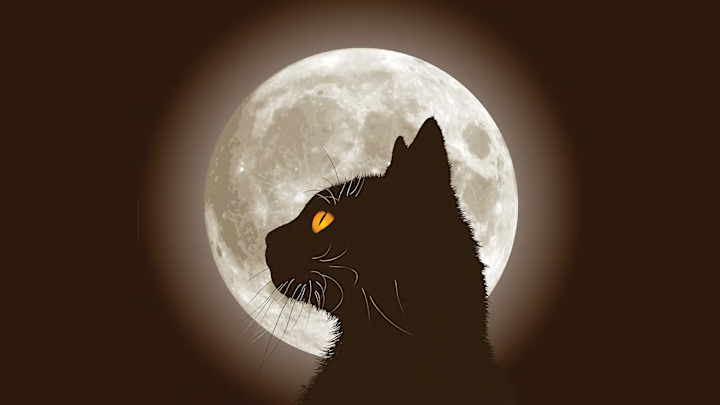Halloween is packed with spooky charm—it’s the season where mythical beings like vampires, werewolves, and ghosts reign supreme. It’s also a fairly animal-centric time of year, as several real (and often misunderstood) creatures have come to symbolize the holiday. Here’s how black cats, bats, owls, and more became linked to Halloween.
Black Cats

Black cats are probably the most iconic Halloween animal. The superstition that these dark creatures bring bad luck dates back to Greek mythology, where they were associated with Hecate, the goddess of magic, witchcraft, and sorcery. By the time the Middle Ages rolled around, black cats were commonly linked to Satan and witches—so much so that a 13th-century church decree was put out labeling them as demonic incarnations of the devil.
This superstition spread to the New World with Puritan colonists and was compounded by the erroneous belief that killing cats could curb the Bubonic plague. These days, black cats are more often seen as spooky Halloween mascots or even lucky charms, depending on who you ask.
Bats

Bats are another animal deeply tied to Halloween. The main reason may simply have to do with how bats look and behave, as these nocturnal animals can be quite startling at first glance. Their association with spooky season may have started with the Celtic festival Samhain, where large bonfires attracted insects, which in turn attracted bats; these were thought to be spirits disturbed by the fires.
Bram Stoker's 1897 novel Dracula cemented their sinister reputation by portraying them as vampires, although real vampire bats feed on the blood of other animals (human bites are rare) and don’t turn them into the undead in the process.
Spiders

Spiders have a deeper connection to Halloween than just being creepy crawlies—although their appearance is certainly a factor. Spiders and spiderwebs are often associated with dark places, old buildings, and other spooky locations. You’re also more likely to see spiderwebs in the fall months; it’s the time of the year many start mating, which means the arachnids may be more visible throughout September and October. And though their silky creations do make great Halloween decor, make sure you don’t try to recreate their handiwork with artificial spider webs, as those can be dangerous for wildlife.
Owls

Owls can partially thank their large eyes, haunting hoos, and nocturnal behavior for their association with Halloween. But their association with the holiday is based on more than just appearances. Like many of the animals on this list, the birds been linked to witchcraft and the supernatural throughout history—although people have been conflicted about their reputation. In Greek mythology, owls served as the symbol of Athena, the goddess of wisdom, while ancient Romans believed the animals could predict someone’s imminent death. Many Native American cultures believe the raptors have a correlation to death and the afterlife, further cementing their status as otherworldly beasts.
Toads

These warty creatures have long been linked to witches in various cultures, and are often depicted as companions believed to assist in their magical practices. This association was popularized in Shakespeare’s Macbeth, where a toad is mentioned in the context of a witch’s brew, reinforcing the idea that the amphibians can be ingredients in dark magic and potions. It also doesn’t help that many toads have toxic substances in their skin that can be poisonous to humans—although you’d have to eat (or lick) them to be affected.
Crows

If you’ve ever seen a group of crows—called a “murder”—circling around the carcass of a dead animal, you understand why they’re associated with Halloween. The birds will eat anything from berries to live snakes, but they’re also scavengers and will often feed on roadkill and garbage. While they may have a worse public image than they deserve (crows are considered one of the most intelligent animals on the planet), there’s no denying they have a foreboding presence. And it certainly doesn’t help that people often confuse them with ravens, another corvid with an eerie reputation.
Rats

Rats—another remarkably intelligent animal—have long been associated with disease and decay. This may be largely due to their role in spreading the Black Death in the 14th century. Although it was technically the fleas on the rats that carried the disease, the rodents became sort of a scapegoat during this period of history; many have considered them to be disease-ridden ever since. Even today, while you can purchase rats in most pet stores, plenty of people consider them too creepy to live in their homes. (For the record, they can be excellent pets for those who can give them the care and attention they deserve.)
Read More About Halloween:
